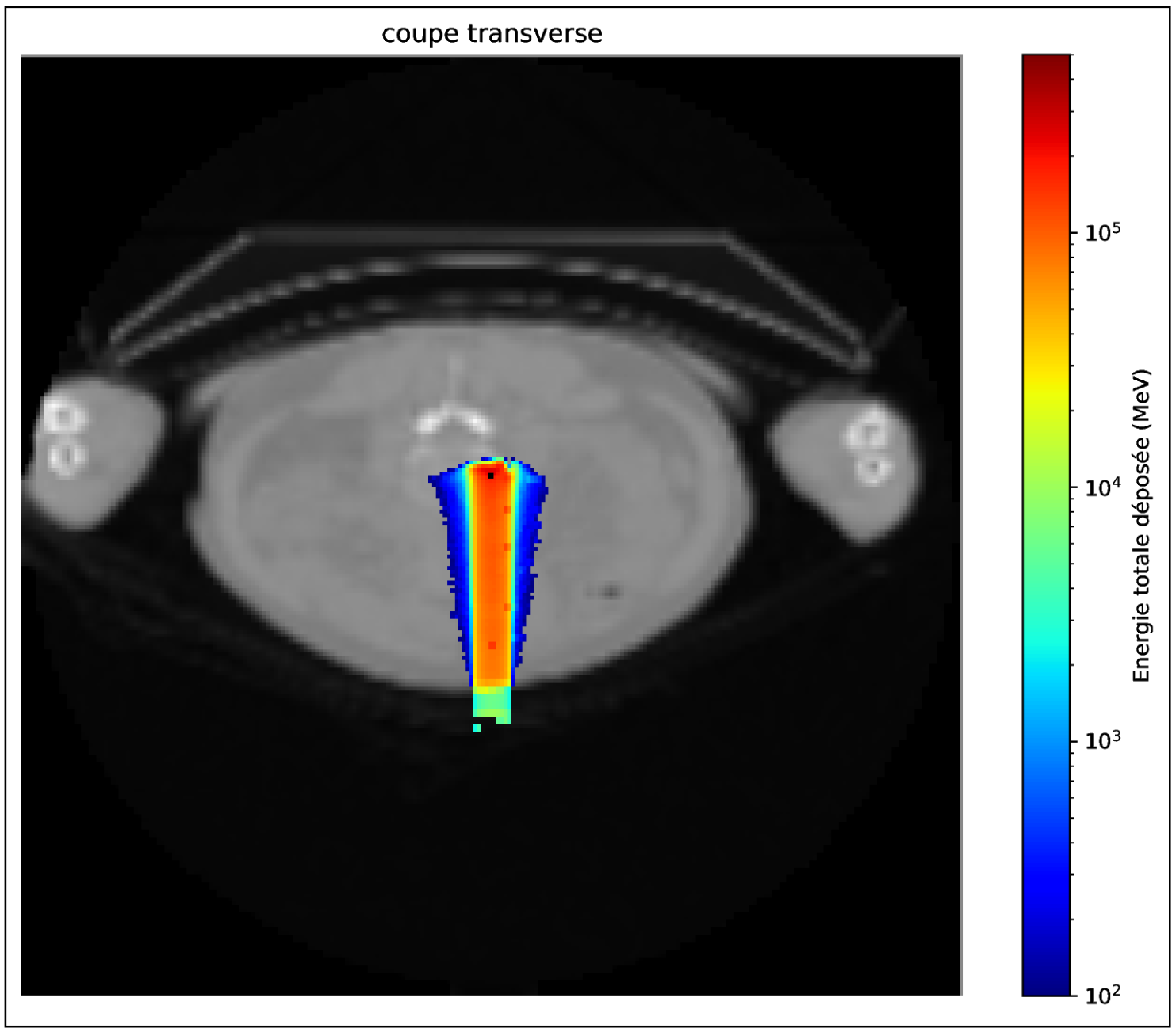Theme: Nuclear physics applied to medicine
Context:
Numerous Monte Carlo (MC) simulations are required to optimise a prompt gamma (PG) imaging system and to train AI-based reconstruction algorithms. Variance reduction methods have been studied in parallel with the development of MC simulations, and among MC variance reduction techniques, trace length estimators (TLEs) are interesting evaluation methods for obtaining fast and accurate MC simulations of rare events, as was initially proposed in the 1980s for the evaluation of photon dose using the Kerma approximation.
The calculation of the PG source by the track length estimator (vpgTLE), which produces a 3D map of PG energy yield (without temporal information), was first proposed in 2015 by the collaboration between the IP2I and CREATIS teams in Lyon and implemented in the MC GATE version 9 platform [El Kanawati 2015]. A gain of approximately 1000 in relative uncertainty was reported for a proton therapy treatment plan for a patient. In 2024, this GATE vpgTLE module was extended to PG emission time as part of Oreste Allegrini's doctoral work [Letang 2024]. Recently, two successive MSc internships enabled the teams to make two major advances: (i) porting the vpgTLE module to the latest Python-based version of GATE, namely version 10 released in autumn 2024, and (ii) integrating the energy and time distribution of PGs from secondary inelastic neutron nuclear processes.
Description of the work:
Several tasks are planned to further develop and make the vpgTLE module more robust and flexible. First, the PG database, which must be rebuilt offline each time the Geant4 physics is updated, benefits from an efficient low-level G4 executable, but its configuration remains delicate. Next, the extension to heavier hadrons (helium and carbon ions) must be undertaken. Finally, it is necessary to remove certain assumptions, in particular the independence of energy and time distributions, which penalise the accuracy on certain delayed discrete gamma lines.


Figure 1. Top: total energy deposited on a CT scan for an incident proton beam (107–130 MeV) placed on the anterior-posterior axis and a black square to locate the voxel of interest (VOI). Middle and bottom: comparison between the analogue simulation (red) and vpgTLE (blue) of PG yields according to their energy (left) and time (right) for the VOI.
Tasks:
- Extension of the module to helium and carbon ion projectiles
- Consolidation of the representation of gamma-prompt databases
- Study of alternative modelling through energy integration
- Development of the 4D (spatial+time) Gate 10 module for gamma prompt sources
- Tests of vpgTLE on LabEx detection devices (TIARA and PGEI)
Location: Centre Léon Bérard, Lyon 8
Contact: Jean M Létang
